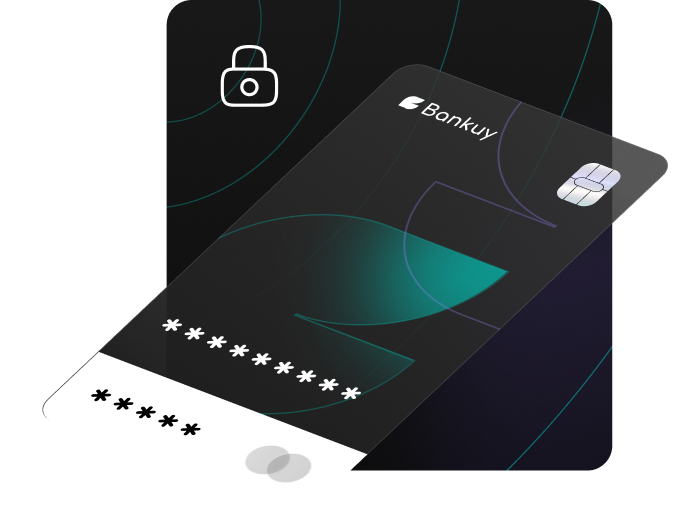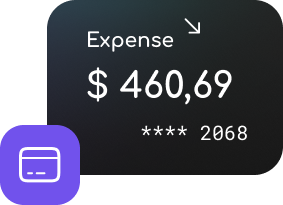








Electronic Money Institution (EMI)
An Electronic Money Institution (EMI) refers to a financial institution that is licensed to issue electronic money, also known as e-money or digital currency. EMIs play a pivotal role in the modern financial ecosystem, facilitating digital payments and electronic fund transfers. They are regulated entities, often subject to specific legal and regulatory frameworks in various jurisdictions, including Lithuania.
Core Functions of EMIs




EMIs typically perform the following core functions and provide related services:
1. Issuance of Electronic Money
EMIs are authorized to create and distribute electronic money. Electronic money is a digital representation of value stored electronically, which can be used for making payments, both online and offline. This function allows individuals and businesses to hold and transact in digital currencies securely.
2. Payment Services
EMIs offer a range of payment services, enabling customers to conduct electronic transactions. These services may include:
- P2P Transfers: Facilitating peer-to-peer money transfers between individuals.
- Online Payments: Enabling customers to make online purchases and pay for services electronically.
- POS (Point of Sale) Transactions: Allowing customers to use electronic money for in-store purchases using card or mobile payment methods.
- Bill Payments: Offering the ability to pay bills, such as utility bills and subscriptions, using electronic money.
3. Currency Exchange Services
Some EMIs provide currency exchange services, allowing users to convert their electronic money into different currencies at competitive rates. This feature is especially valuable for international transactions, as it can reduce currency conversion costs.
4. Electronic Wallets
EMIs often provide customers with electronic wallets or accounts where they can store and manage their electronic money securely. These wallets are accessible through web and mobile applications, offering convenience and accessibility to users.
5. Regulatory Compliance
EMIs must adhere to strict regulatory and compliance requirements. They are typically subject to anti-money laundering (AML) and know your customer (KYC) regulations to prevent financial crimes and ensure the legitimacy of their customers’ transactions.
VASP license are financial entities that specialize in digital currency issuance and electronic payment services. They play a vital role in the digital economy by providing secure and convenient alternatives to traditional cash transactions, contributing to the evolution of modern finance.








Acquiring an EMI License
EU Passporting Rights
One of the most significant advantages of obtaining an EMI license in Lithuania is the access to EU passporting rights. Lithuania, as an EU member state, allows EMIs licensed in the country to operate across the European Economic Area (EEA) without the need for separate licenses in other EEA member states. This means that once an EMI is established in Lithuania, it can provide its services to customers throughout the EU, opening up a vast market of over 440 million potential customers.
Friendly Regulatory Environment
Lithuania has gained a reputation for maintaining a friendly and supportive regulatory environment for fintech and EMI businesses. The regulatory authorities, particularly the Bank of Lithuania, have demonstrated a proactive approach in working with fintech companies to facilitate their growth while ensuring compliance with regulations. The regulatory framework is transparent, and the application process is relatively straightforward, making it easier for businesses to obtain licenses compared to some other EU countries.
Fast Application Process
Lithuania is known for its efficient and relatively quick EMI license application process. The streamlined procedures mean that businesses can establish themselves and start offering electronic money services in a relatively short time frame. This speed can be crucial for fintech startups and companies looking to enter the market promptly.
Access to SEPA
Lithuania is part of the Single Euro Payments Area (SEPA), which simplifies cross-border euro payments within the EU and associated countries. By acquiring an EMI license in Lithuania, businesses gain access to the SEPA network, making it easier and cost-effective to handle euro-denominated transactions across borders.
Examples of Successful EMI Businesses in Lithuania



Revolut: Revolut is a UK-based fintech company that has obtained an EMI license in Lithuania. It offers a range of financial services, including digital banking, currency exchange, and cryptocurrency trading. Lithuania’s regulatory environment and EU passporting rights have been crucial for Revolut’s expansion across Europe.
Several successful EMI businesses have established themselves in Lithuania, benefiting from the advantages mentioned above. Some notable examples include:
01
Paysera:
Paysera is a Lithuanian-based fintech company that started as an EMI and has since grown into a full-service financial institution. It provides electronic money services, payment processing, and a variety of financial products to customers across Europe.
02
Contis:
Contis, a UK fintech company, has also chosen Lithuania as its base for EMI services. They offer payment solutions and prepaid card programs to businesses and consumers.
These examples showcase the success of EMIs in Lithuania and how the strategic advantages of EU passporting, a supportive regulatory environment, and a fast application process have contributed to their growth and expansion in the European market.

Prerequisites for Applying for an EMI License
Happy Members
Financial Growth
Money Managed


Qualifying Criteria
Before applying for an Electronic Money Institution (EMI) license in Lithuania, it’s essential to meet certain eligibility requirements and adhere to specific legal and capital requirements. Here is a detailed list of the qualifying criteria:
Legal Structure:
- Incorporation: The EMI must be registered as a legal entity in Lithuania. This can be in the form of a limited liability company (LLC) or another suitable legal structure.
- Directors and Shareholders: The management and shareholders of the EMI should meet the fit and proper criteria set by the regulatory authority, the Bank of Lithuania. This involves ensuring that the individuals involved have a good reputation, financial integrity, and relevant experience in the financial sector.
- Registered Office: The EMI must have a registered office in Lithuania, which serves as its legal address.
Capital Requirements:
- Initial Capital: The EMI must demonstrate sufficient initial capital to meet the regulatory requirements. As of my last knowledge update in September 2021, the minimum initial capital requirement was €350,000. However, these requirements may change over time, so it’s crucial to check with the Bank of Lithuania for the most up-to-date figures.
- Own Funds: In addition to the initial capital, the EMI is required to maintain a minimum level of own funds, which serve as a safeguard against financial instability. The calculation of own funds is specified by the regulatory authority.
- Capital Adequacy: The EMI must maintain adequate capital reserves to ensure financial stability and meet the requirements of the Capital Adequacy Directive.
Regulatory Compliance:
- Anti-Money Laundering (AML) and Know Your Customer (KYC) Procedures: The EMI must have robust AML and KYC policies and procedures in place to prevent money laundering and verify the identity of customers.
- Business Plan: Applicants are typically required to submit a comprehensive business plan outlining their intended operations, risk management strategies, and financial projections.
- IT Infrastructure and Security: The EMI should have a secure and scalable IT infrastructure to support electronic money services. This includes measures to protect customer data and ensure the availability and integrity of systems.
- Risk Management Framework: The EMI must have a well-defined risk management framework that identifies, assesses, and manages risks associated with its operations.
- Compliance Function: There should be a dedicated compliance function responsible for ensuring that the EMI complies with all relevant regulations and requirements.
- Audit and Reporting: The EMI must arrange for regular audits of its financial statements and operational activities. It should also submit periodic reports to the regulatory authority.
Please note that the specific requirements and regulations may evolve over time. It is highly advisable to consult the Bank of Lithuania or a legal advisor with expertise in financial regulation in Lithuania for the most up-to-date information and guidance when applying for an EMI license.
Building a Strong Business Plan for an EMI Application
A well-structured business plan is crucial when applying for an Electronic Money Institution (EMI) license in Lithuania or any other jurisdiction. It not only helps you present your business idea to regulatory authorities but also serves as a roadmap for your EMI’s future success. Here are the reasons why a strong business plan is important and key components that should be included, tailored to EMI applications:
Post-Licensing Compliance and Operations
Ongoing Regulatory Obligations
After obtaining an Electronic Money Institution (EMI) license in Lithuania, it is essential to remain in compliance with regulatory obligations. Here is an overview of the continuous compliance requirements:
Reporting and Documentation:
Regultory authorities, such as the Bank of Lithuania, require EMIs to submit regular reports, including financial statements and transaction reports. These reports help monitor the financial health of the EMI and ensure compliance with anti-money laundering (AML) and know your customer (KYC) requirements. Proper documentation and record-keeping are essential for these reporting obligations.
AML and KYC:
EMIs must maintain robust AML and KYC procedures to prevent money laundering and terrorist financing. This includes ongoing customer due diligence (CDD), monitoring of customer transactions for suspicious activity, and reporting of suspicious transactions to relevant authorities.
Capital Adequacy:
EMIs must continuously monitor their capital adequacy to ensure they meet regulatory capital requirements. Adequate capital reserves are necessary to cover operational risks and financial stability.
Consumer Protection:
EMIs must adhere to consumer protection regulations, ensuring that customers’ rights and interests are safeguarded. This includes transparent pricing, clear terms and conditions, and handling customer complaints effectively.
The Role of Internal Policies and Procedures
Internal policies and procedures play a critical role in ensuring adherence to ongoing regulatory obligations. These documents provide guidance to employees on how to carry out tasks in a compliant manner. Key elements of internal policies and procedures include:
- AML and KYC protocols: Detailed instructions on how to conduct customer due diligence, identify suspicious activity, and report it.
- Risk management guidelines: Procedures for identifying, assessing, and mitigating risks.
- Compliance with capital adequacy requirements: Guidelines on how to monitor and maintain adequate capital reserves.
- Consumer protection policies: Instructions on how to handle customer complaints and ensure fair treatment.
- Cybersecurity protocols: Procedures for safeguarding customer data and preventing security breaches.
- Reporting and documentation procedures: Steps for preparing and submitting required reports and maintaining accurate records.
Effective internal policies and procedures help EMIs establish a culture of compliance within the organization, reducing the risk of regulatory violations and penalties. Compliance is an ongoing commitment that requires continuous monitoring and adaptation to evolving regulatory standards.
Setting Up Operations
Setting up operations for an Electronic Money Institution (EMI) in Lithuania involves several crucial steps to ensure a smooth and compliant launch. Here’s a concise overview:
Physical Presence: Establish a registered office and operational headquarters in Lithuania. This office serves as the legal address and central hub for your EMI’s activities.
Compliance Infrastructure: Develop robust internal policies and procedures to comply with Lithuanian and EU regulations. These should cover areas such as anti-money laundering (AML), know your customer (KYC), risk management, and data protection.
IT Infrastructure: Build a secure and scalable IT infrastructure to support electronic money services. Implement cybersecurity measures to protect customer data and transaction integrity.
Capital Adequacy: Ensure you meet the minimum capital requirements set by the Bank of Lithuania. Maintain sufficient capital reserves to cover operational risks and ensure financial stability.
Risk Management: Establish a comprehensive risk management framework, including risk identification, assessment, and mitigation strategies. Regularly monitor and update risk management processes.
Regulatory Liaison: Maintain open communication with regulatory authorities, particularly the Bank of Lithuania. Cooperate with audits and examinations to demonstrate compliance.
Staffing: Hire and train staff with expertise in finance, compliance, and fintech. Ensure that employees understand and adhere to regulatory requirements.
